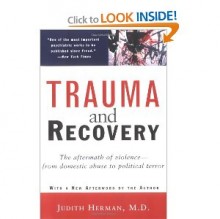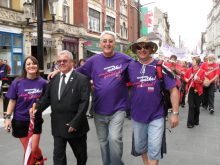 Whilst in the UK, I bought a hardback copy of Gabor Maté’s thought-provoking new book The Myth of Normal: Trauma, Illness & Healing in a Toxic Culture. Yes, today’s Western society capitalist culture is toxic, according to one of the world’s leading trauma experts.
Whilst in the UK, I bought a hardback copy of Gabor Maté’s thought-provoking new book The Myth of Normal: Trauma, Illness & Healing in a Toxic Culture. Yes, today’s Western society capitalist culture is toxic, according to one of the world’s leading trauma experts.
Here is what the book’s introduction says:
‘”It all starts with waking up… to what our bodies are expressing and our minds are suppressing.”
Western countries invest billions in healthcare, yet mental illness and chronic diseases are on a seemingly unstoppable rise. Nearly 70% [!] of Americans are now on prescription drugs. So what is ‘normal’ when it comes to health?

 A couple of months ago I came across an excellent article in the
A couple of months ago I came across an excellent article in the  I wanted to introduce you to an amazing healing resource which appears on
I wanted to introduce you to an amazing healing resource which appears on  I continue the series of films made by Mike Liu and I when we spent a day with
I continue the series of films made by Mike Liu and I when we spent a day with  Yes, this is my 100th blog post since I restarted blogging again on Recovery Stories on the 8th of March 2021. I’ve also added various other forms of content on other parts of the website, and released my eBook
Yes, this is my 100th blog post since I restarted blogging again on Recovery Stories on the 8th of March 2021. I’ve also added various other forms of content on other parts of the website, and released my eBook  My good friend Michael Scott, of
My good friend Michael Scott, of  ‘Our first generations were killed and imprisoned, and females sexually misused. Our second generations turned to alcohol or drugs as their cultural and spiritual identity was damaged; in our third generations we had spousal assault and societal trauma.
‘Our first generations were killed and imprisoned, and females sexually misused. Our second generations turned to alcohol or drugs as their cultural and spiritual identity was damaged; in our third generations we had spousal assault and societal trauma.
 During the many years I spent working in the addiction and mental health field, first as a neuroscientist and later helping empower people to facilitate their recovery (healing), I rarely heard the word ‘trauma’ being used.
During the many years I spent working in the addiction and mental health field, first as a neuroscientist and later helping empower people to facilitate their recovery (healing), I rarely heard the word ‘trauma’ being used. It’s hard to believe that it is over seven years ago since I launched
It’s hard to believe that it is over seven years ago since I launched  When I first became interested in Indigenous healing a number of years ago, I did a great deal of reading about the healing of trauma and intergenerational trauma. I summarised what I considered to be 12 principles of healing, which are relevant to Aboriginal people here in Australia and other Indigenous peoples around the world. I first posted about these principles on
When I first became interested in Indigenous healing a number of years ago, I did a great deal of reading about the healing of trauma and intergenerational trauma. I summarised what I considered to be 12 principles of healing, which are relevant to Aboriginal people here in Australia and other Indigenous peoples around the world. I first posted about these principles on  Here is the next section from my chapter Factors Facilitating Recovery in my eBook
Here is the next section from my chapter Factors Facilitating Recovery in my eBook  The aim of the
The aim of the  Recently, I read one of the best books I have read relevant to my work. The book,
Recently, I read one of the best books I have read relevant to my work. The book,  Huseyin Djemil from the UK has this week launched a new podcast focused on recovery from addiction, which he describes as such:
Huseyin Djemil from the UK has this week launched a new podcast focused on recovery from addiction, which he describes as such:
 In more recent years, my work has in large part been focused around the healing of trauma. I set up the educational initiative
In more recent years, my work has in large part been focused around the healing of trauma. I set up the educational initiative 
 As I write this, my good friend Adam Brookes, he of
As I write this, my good friend Adam Brookes, he of 
